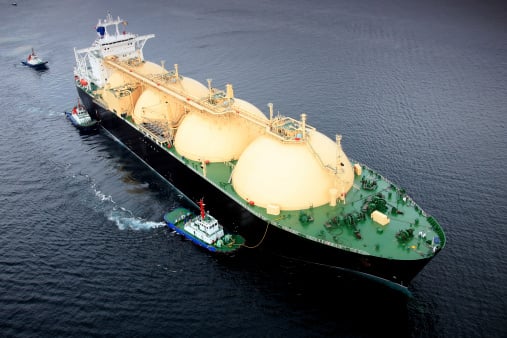
Source: Thinkstock
In the United States, where natural gas prices have been low for years, this may not be news. But in Asia, particularly South Korea and Japan, where essentially all natural gas supplies are imported, prices have hovered around $18 per million BTUs. In 2008, the average U.S. natural gas spot price reached $8.86 per million BTUs, their highest level since 1997, and the average has remained below $4 in the past few years.
The IEA’s executive director said:
[T]he belief that Asia will take whatever quantity of gas at whatever price is no longer a given. The experience of the past two years has opened the gas industry’s eyes to a harsh reality: in a world of very cheap coal and falling costs for renewables, it was difficult for gas to compete.
Because Asian natural gas prices are indexed to oil prices, last year’s sharp drop in the price of crude has also substantially dropped the price of natural gas. In the short term, demand for natural gas will increase because of the lower pricing, but some Asian countries (India comes to mind) plan to expand coal-fired power generation because coal is even cheaper than natural gas.
ALSO READ: The Happiest Countries in the World
This is not particularly good news for the U.S. firms building or planning to build natural gas liquefaction plants to send some of the booming U.S. shale gas production to Asian markets. The IEA noted:
Due to their capital-intensive nature and long lead times, liquefied natural gas (LNG) projects are soft targets for investment reductions and several of them are likely to be delayed or even cancelled. If current low prices persist, LNG markets could start tightening substantially by 2020, with demand gradually absorbing the large supply upswing expected over the next three years.
LNG projects in Australia and the United States are forecast to supply 90% of the 40% jump in natural gas supplies on the market in 2020. Chevron Corp. (NYSE: CVX) is expected to begin first deliveries later this year from its massive Gorgon LNG project in Australia. The company is also the operator of another Australian LNG project, Wheatstone, that is still being developed.
Closer to home, there are 18 LNG export terminals proposed for construction in the United States. Cheniere Energy Inc. (NYSEMKT: LNG) plans to begin shipping LNG from its Sabine Pass project later this year, the first major LNG export terminal to begin operations in the United States.
World demand for natural gas is forecast to rise from 3.5 trillion cubic meters (about 124 trillion cubic feet) to 3.93 trillion cubic meters (139 trillion cubic feet) in 2014.
ALSO READ: America’s Most (and Least) Valuable States
Take This Retirement Quiz To Get Matched With An Advisor Now (Sponsored)
Are you ready for retirement? Planning for retirement can be overwhelming, that’s why it could be a good idea to speak to a fiduciary financial advisor about your goals today.
Start by taking this retirement quiz right here from SmartAsset that will match you with up to 3 financial advisors that serve your area and beyond in 5 minutes. Smart Asset is now matching over 50,000 people a month.
Click here now to get started.
Thank you for reading! Have some feedback for us?
Contact the 24/7 Wall St. editorial team.


